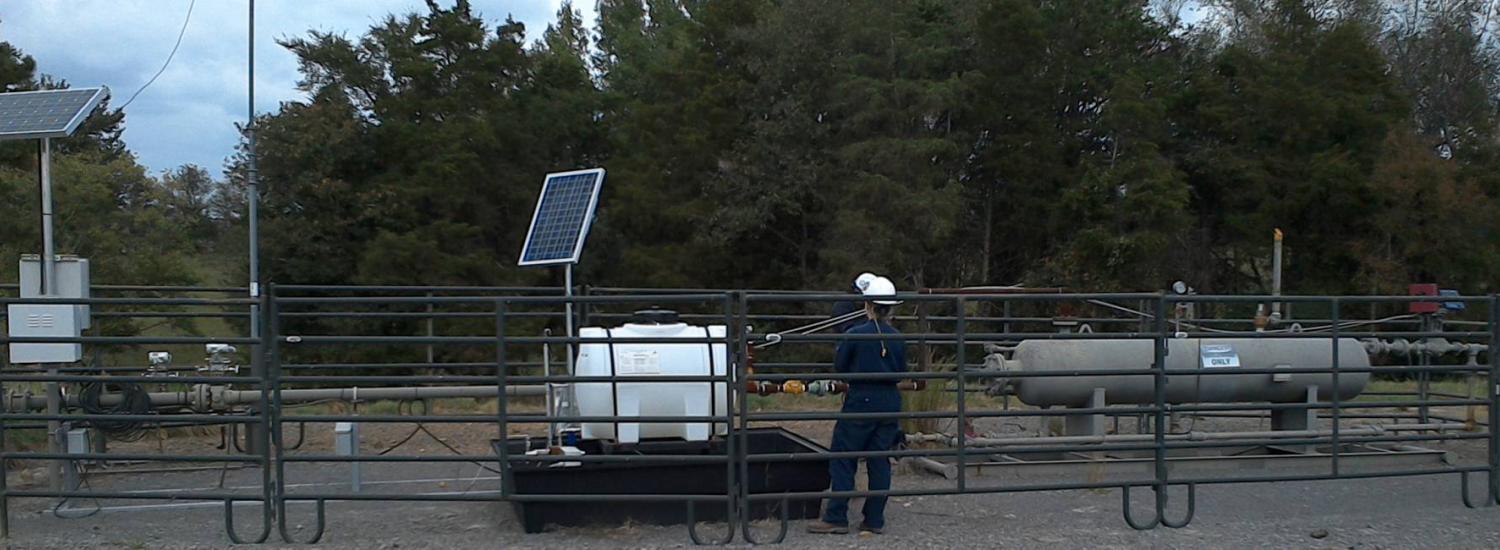Study Reconciles Persistent Gap in Natural Gas Methane Emissions Measurements

A new study offers answers to questions that have puzzled policymakers, researchers and regulatory agencies through decades of inquiry and evolving science: How much total methane, a greenhouse gas, is being emitted from natural gas operations across the U.S.? And why have different estimation methods, applied in various U.S. oil and gas basins, seemed to disagree?
The Colorado State University-led study, published October 29 in Proceedings of the National Academy of Sciences, resulted from a large, multi-institutional field campaign called the Basin Methane Reconciliation Study. The researchers found that episodic releases of methane that occur mostly during daytime-only maintenance operations, at a few facilities on any given day, may explain why total emissions accountings have not agreed in past analyses.
With invaluable assistance from industry partners, the researchers have significantly advanced basin-level emission quantification methods and shed new light on important emissions processes.
"Our study is the first of its kind, in its scope and approach," said Dan Zimmerle, senior author of the PNAS study, and a senior research associate at the CSU Energy Institute. "It utilized concurrent ground and aircraft measurements and on-site operations data, and as a result reduces uncertainties of previous studies."
The Basin Methane Reconciliation Study included scientists from CSU, Colorado School of Mines, University of Colorado Boulder, the National Oceanic and Atmospheric Administration, and the National Renewable Energy Laboratory. Other scientific partners were University of Wyoming, Aerodyne, AECOM, Scientific Aviation and GHD. The field campaign took place in 2015 in the Fayetteville shale gas play of Arkansas' Arkoma Basin.
Coordinated Effort
The campaign involved more than 60 researchers making coordinated facility- and device-level measurements of key natural gas emissions sources. The campaign also included a series of aircraft flyovers to collect measurements during the same period when researchers were taking measurements on the ground. The flights took place when meteorological conditions allowed accurate regional emissions estimates.
The research team set out to investigate the persistent gap between two widely used methods of estimating methane emissions from natural gas operations. "Bottom-up" estimates, such as those used in the EPA Inventory of U.S. Greenhouse Gas Emissions and Sinks, are developed by measuring emissions from a representative sample of devices, scaled up by the number of devices or emission events. In contrast, "top-down" measurements can be performed at a regional scale, such as flying an aircraft upwind and downwind of a study area to derive total emissions from methane entering or leaving a basin.
In the past, most aircraft-based, basin-scale emissions estimates have been statistically higher than estimates based on bottom-up accounting.
"The key to our efforts was having everyone out in the same field, at the same time," said Gabrielle Petron, a research scientist from CIRES at CU Boulder and NOAA who was the principal investigator for the top-down measurement team. "By comparing the merits and pitfalls of multiple methods of measurement, we were able to paint a much more comprehensive, and we believe accurate, picture of the methane emissions landscape for natural gas infrastructure."
CIRES scientists Gabrielle Petron and Stefan Schwietzke, who work in the NOAA Earth System Research Laboratories, are co-authors on this study.
This story was written by Colorado State University communications. Read the full story here.